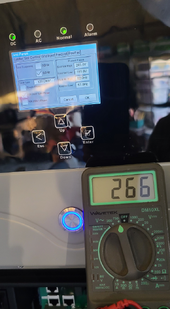YAMLcase
New Member
- Joined
- Oct 13, 2021
- Messages
- 36
For the past couple of days we've been suffering from the inverter (Sol-Ark 12K) dropping our power and I finally realized we're getting too high voltage supplied by the grid and the voltage protection kept kicking in (Max 265V). We're on split-phase 240V here in Texas so our measurements of just shy of 270V seemed really excessive. Right now I disconnected the grid and am treating this as a grid-down situation, running off solar and gennie until this gets sorted.
What kind of effects could I expect to see running the household appliances off 135V? I can't imagine that it's good.
FYI: I have 3 different multimeters with fresh batteries all measuring the same thing so I know this is accurate.


What kind of effects could I expect to see running the household appliances off 135V? I can't imagine that it's good.
FYI: I have 3 different multimeters with fresh batteries all measuring the same thing so I know this is accurate.




